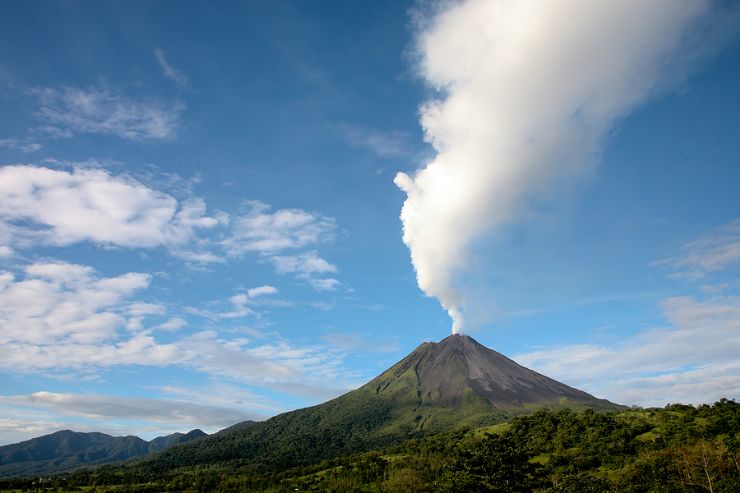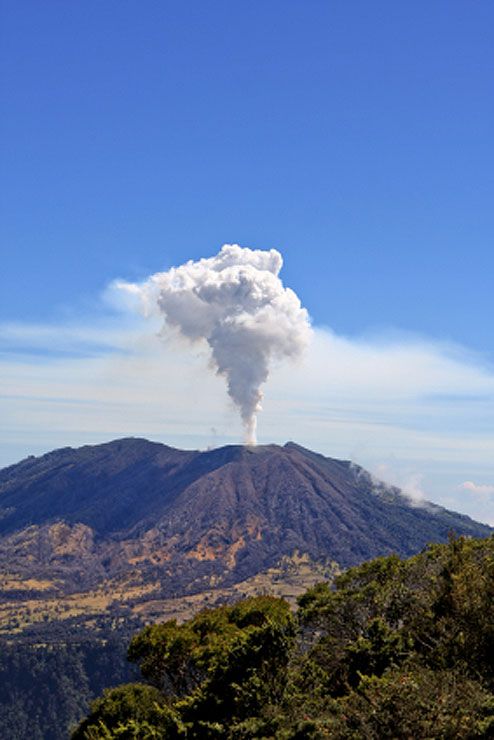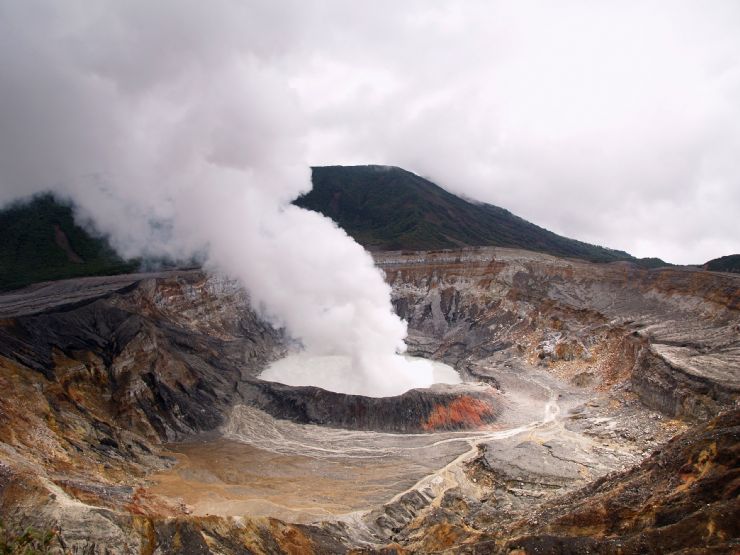
Spectacular Arenal Volcano
Located along the Pacific Ring of Fire, Costa Rica is home to several volcanoes. While some of these are dormant, others are highly active. After the earthquake that struck Costa Rica last week, four of the country's volcanoes are under close watch in case they show signs of seismic activity, but what makes these mighty mountains blow?
Planetary forces
Volcanoes are ruptures in the Earth's surface, often caused when tectonic plates - the vast land masses that continents sit on - collide with one another. Tectonic plates are constantly shifting, which is why earthquakes like the one that hit Costa Rica last week happen, as the movement creates tension along the areas where the plates meet, which are known as fault lines. However, although the volcanoes of Costa Rica were created by this tension between tectonic plates, this is relatively unusual, and volcanoes aren't usually formed in this way.
White-hot molten rock, known as lava, is forced up from deep underground toward the craters at the summit of volcanoes by subterranean pressure. When the steam, gas and heat inside the volcano reach a critical point, the volcano erupts, spewing lava, hot ash and debris high into the air. In fact, volcanic eruptions can be so powerful, the ash clouds can be seen from space!

Turrialba Volcano Erupting
7 Days / 6 Nights
Starting at $779 per person
Located in Costa Rica's Central Highlands, Poas Volcano is one of the most active in the Pacific Ring of Fire. Although the last major eruption occurred in 1910, Poas remains highly active, and you can often see geysers shooting as high as 850 feet into the air. The crater at the summit of Poas Volcano is almost a mile in diameter - if this one blows, it'll be big.
Rincon de la Vieja Volcano in the province of Guanacaste is another of Costa Rica's active volcanoes. Part of the Guanacaste Mountains, Rincon last exhibited signs of major eruptive activity in the late 1960s.
Although Turrialba hasn't erupted since the late 19th century, it's one of the most active in terms of what scientists call fumarolic activity - the emission of deadly gases such as sulfur dioxide, hydrochloric acid and hydrogen sulfide. Turrialba is also located in the Central Highlands, around 25 miles from San Jose.
Arenal Volcano, in the province of Alajuela, is one of the youngest volcanoes in Costa Rica, at around 7,000 years old. Although most of Arenal's activity is fumarolic, an expected eruption in 1968 wiped out the nearby town of Tabacon.
Earthquakes don't always precede volcanic eruptions, but scientists here aren't taking any chances!

Poas Volcano Ash Eruption

